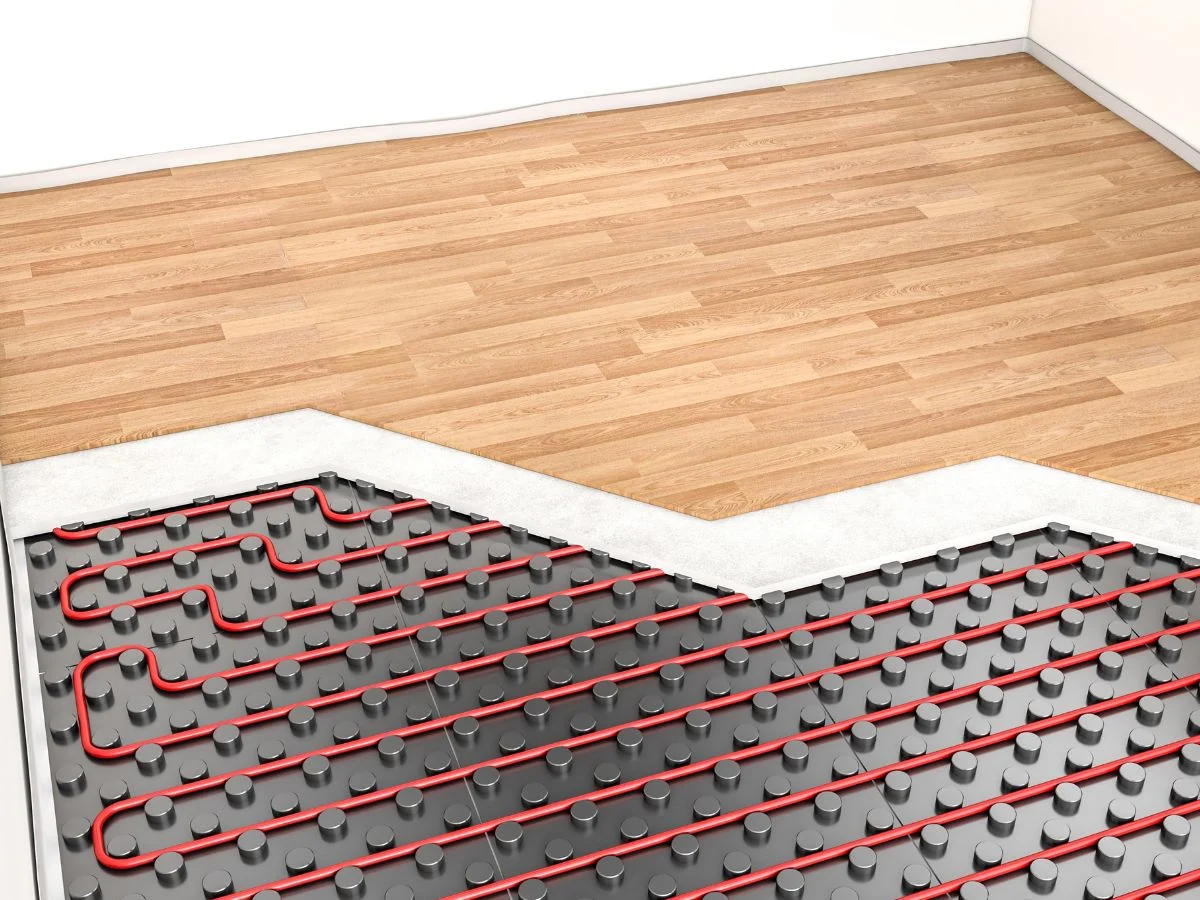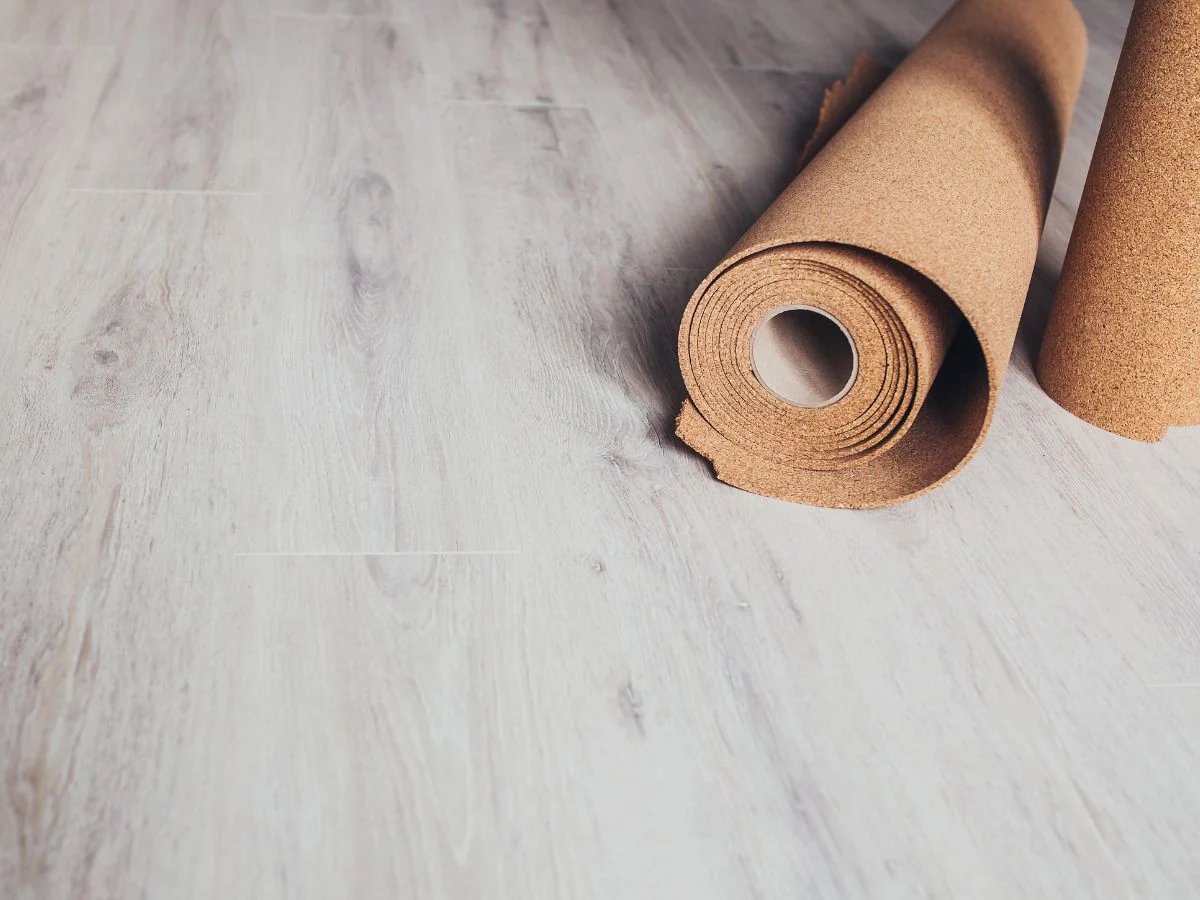Why Your Engineered Wood Floor Needs a Hero: Top 5 Benefits of Engineered Wood Flooring Underlayment
When you’re investing in engineered wood flooring for your home, there’s one crucial element that often gets overlooked but makes all the difference. Underlayment might be hidden beneath your beautiful new floors, but it’s the unsung hero that protects your investment and transforms your living experience.
Underlayment is a thin layer of material that is laid between your subfloor and engineered wood planks. This seemingly simple addition provides multiple benefits that extend far beyond what most homeowners realise.
What is Engineered Wood Flooring Underlayment?
Engineered wood flooring underlayment serves as a protective barrier and cushioning layer between your subfloor and floating floor planks. Unlike solid hardwood that gets nailed directly down, engineered wood floors rely on this intermediate layer to provide stability, comfort, and protection. Engineered wood flooring can be fitted using different methods, such as floating, glued, or nailed down, and the chosen fitting method affects whether you need underlay.
Modern underlayment options include foam, cork, and rubber materials. Foam provides good moisture resistance and sound dampening at affordable prices. Cork offers superior thermal insulation and natural antimicrobial properties. Rubber delivers exceptional sound reduction and durability. When installing a floating floor, the boards are allowed to float over the underlay, while glued installations involve fixing the boards directly to the subfloor. Flooring underlay is required for most floating and some fitted installations to provide soundproofing, insulation, and moisture protection. The process of laying engineered wood flooring involves careful consideration of the underlay and fitting method-especially when deciding between the engineered wood floating floor vs glue down method, as the choice impacts performance, longevity, and comfort.
Superior Sound Reduction and Noise Control
One of the most noticeable benefits appears immediately after installation. Quality underlayment dramatically reduces impact sound transmission between floors, making it essential for flats or multi-storey homes where neighbour consideration matters. Quality underlays also help minimize airborne noise such as music and conversation, further enhancing comfort in noisy environments.
Beyond reducing sound transmission to other areas, underlayment significantly improves acoustics within rooms themselves. Hard flooring surfaces create echo and hollow sounds that make spaces feel cold. Quality underlays provide superior acoustic insulation and noise reduction, resulting in warmer, more welcoming room acoustics. When selecting underlayment for sound reduction, look for Impact Insulation Class ratings of 50 or above for good residential performance.

Enhanced Comfort and Thermal Insulation
Quality underlayment transforms your flooring's thermal performance, creating noticeably warmer floors during colder months. This proves particularly valuable in homes with concrete subfloors or rooms over unheated spaces like garages.
The cushioning effect creates a more comfortable walking surface that reduces fatigue during extended standing periods. This benefit proves especially valuable in kitchens or home offices where people spend significant time on their feet. The slight cushioning absorbs impact from each step, reducing stress on joints and muscles.
Moisture Protection and Prevention
Moisture represents one of the greatest threats to engineered wood flooring longevity. Even small amounts can cause warping, cupping, and premature deterioration. Quality underlayment with integrated moisture barriers provides essential protection against these damaging effects.
Vapour barriers prevent moisture from rising through concrete subfloors, which naturally contain moisture that continues evaporating for months after installation. Without proper protection, this moisture causes significant damage to engineered wood flooring. Many building codes now require specific vapour barrier performance standards for flooring installations over concrete.
Subfloor Imperfection Compensation
Even carefully prepared subfloors contain minor imperfections that create problems for floating floor installations. Small bumps and dips can cause squeaks, gaps, and premature wear. Quality underlayment compensates for these irregularities by providing a more uniform surface.
Proper underlayment distributes loads evenly across the subfloor, preventing concentrated stress that causes squeaks and movement problems. This stress distribution maintains plank stability over time by providing consistent support that accommodates natural wood movement.
Warranty Protection and Long-Term Value
Most engineered wood manufacturers specify underlayment requirements in warranty terms. Failure to install proper underlayment can void coverage, leaving you responsible for costly repairs. Understanding these requirements protects both warranty coverage and your investment.
Quality underlayment prevents common problems leading to premature replacement. The modest additional investment provides substantial protection against moisture damage, excessive wear, and installation-related issues that could otherwise require expensive repairs.

Choosing the Right Underlayment for Your Engineered Wood Floor
Selecting the right underlayment is a key step in ensuring your engineered wood flooring not only looks stunning but also performs at its best for years to come. With so many options available, it’s important to match your underlay to your specific project needs, subfloor type, and room conditions.
Start by considering your subfloor. If you’re installing engineered wood over concrete or screed, a suitable underlay with a built-in damp proof membrane is essential to stop moisture rising and protect your new floor from potential damage. For wooden subfloors, a standard underlay may be sufficient, but always check for compatibility to ensure stability and long-term protection.
If your project includes underfloor heating, opt for an underlay designed to work with these systems. Look for thin layer underlays that allow heat to pass through efficiently, so you can enjoy the comfort of warm floors in spaces like kitchens and bathrooms without compromising on performance. Many modern underlays are specifically engineered for use with underfloor heating, ensuring your engineered wood flooring remains both comfortable and energy-efficient.
Acoustic insulation is another crucial factor, especially in apartments, bedrooms, or multi-storey homes where sound reduction is a priority. Acoustic underlays made from high density materials or recycled fibres offer great noise insulation, helping to lessen impact sound and create a quieter, more peaceful environment. For herringbone or chevron patterns, specialist acoustic underlays like Regupol are designed to provide excellent sound reduction and stability. If you're also considering the underlying woodboard, it’s worth checking out what thickness of engineered wood flooring works best for apartments for optimal sound and height considerations.
Underlay thickness also plays a significant role in the feel and function of your floor. While thicker underlays can offer better acoustic and thermal insulation, they may also make the floor feel bouncy if not chosen carefully. Most underlays range from 1.8mm to 6mm in thickness, so consider the specific needs of your room and the type of engineered wood flooring you’re installing. The right thickness will provide comfort underfoot without compromising the stability of your floating floor.
Material features and accessories can make a big difference in performance. High density underlays, those with integrated vapour barriers, and options made from recycled fibres all offer added protection against moisture and noise. Some underlays come with extra features like self-adhesive strips or pre-attached damp proof membranes, making installation easier and more effective.
When choosing your underlay, balance price, material features, and customer reviews to find the best fit for your project. While premium underlays may come at a higher price, they often deliver superior protection, comfort, and longevity-making them a smart investment for your engineered wood flooring.
Conclusion
Quality underlayment transforms your engineered wood flooring from a simple floor covering into a complete comfort and protection system. The five benefits we’ve explored demonstrate why this modest investment delivers exceptional long-term value through improved sound control, enhanced comfort, moisture protection, subfloor compensation, and warranty preservation.
Underlay is available in convenient roll form, with different thicknesses to suit various installation needs. The use of underlay is required for certain installation methods and to meet warranty conditions. Underlay is also suitable for laminate and laminate flooring, providing similar benefits in terms of soundproofing and moisture protection. For homes with an underfloor heating system, it is important to choose underlay that is compatible to ensure optimal performance.
Ready to give your engineered wood flooring the foundation it deserves? At Lumber King, we specialise in premium engineered wood flooring solutions. Browse our extensive range and order your free samples today to experience the quality difference for yourself. We encourage our customers to leave feedback and reviews about their experience with our engineered wood flooring underlayment.





















